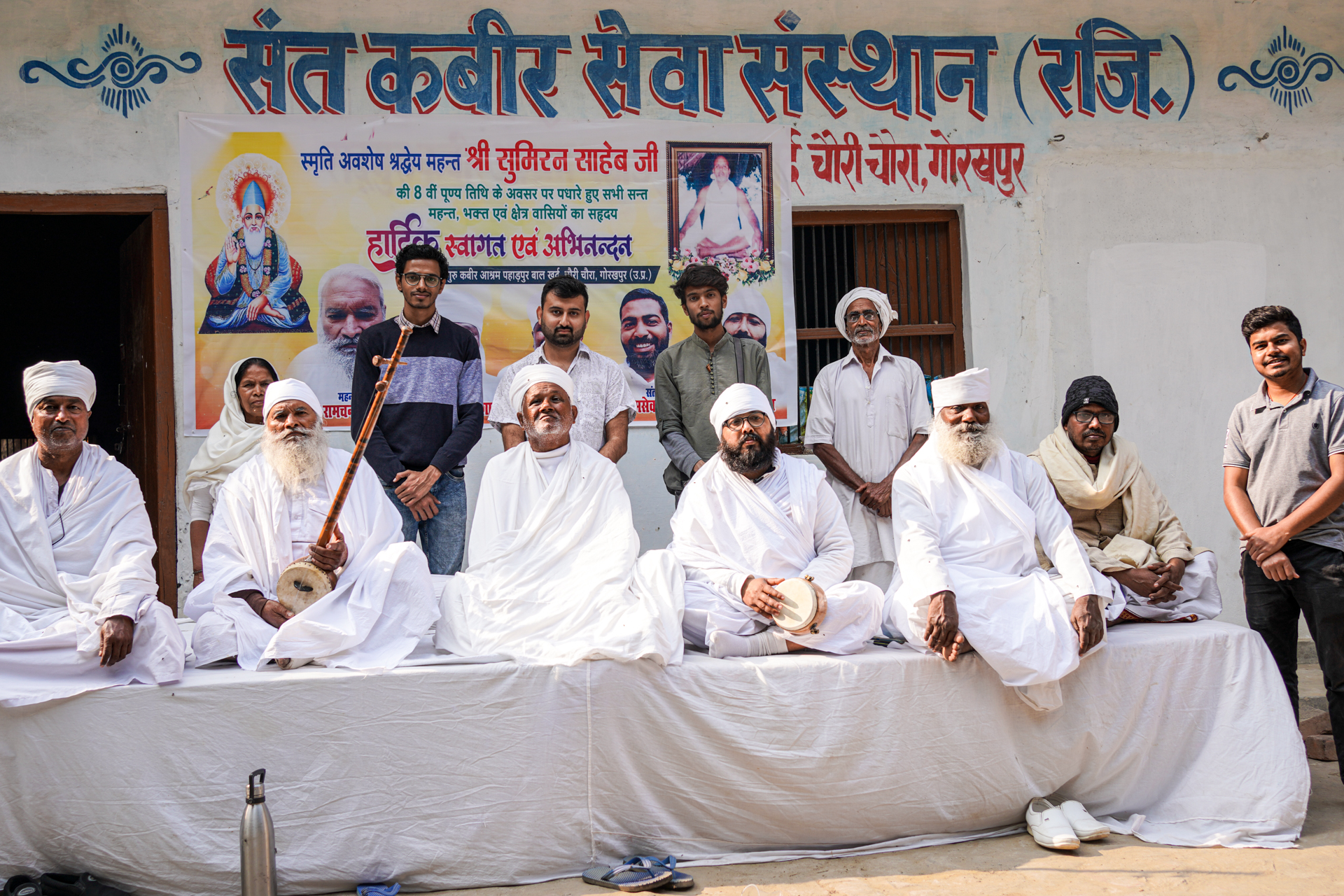
The intersection of folk music and mystic philosophy
The teachings and sayings of Kabir survive to the present day in the bhajans of the saints composed in beloved folk tunes of Uttar Pradesh.
The 15th-century mystic poet and saint Kabir Das have had such an influential, lasting legacy upon India that he needs no introduction to the average citizen today. Everybody studies and memorises his couplets, called dohe in Hindi, in schools. Their message of fraternity and love is so universal that it has remained just as relevant even six centuries later. Kabir Panthi is a religious movement that arose from his philosophy, with saints leading the way forward in preserving and preaching his thought and adapting it to the present. Disciples come from all religious backgrounds, as Kabir was against all organised religions and criticised religious conversion. Instead, practitioners aim for universal brotherhood and organise society around loving kindness for everyone and helping each other attain salvation.
There are many Kabir Ashrams across Uttar Pradesh where the saints live and preach the teachings of Kabir to willing disciples. These Ashrams are a refuge for people from all backgrounds, with no discrimination based on caste and creed. The saints in these Ashrams live a life of meditation and contemplation and perform bhajans. These bhajans are nothing but Kabir’s couplets set to folk tunes like Nirgun, Bidesia, etc. Bhajans are an easy way to communicate with the common masses, and since they are composed in folk tunes, they are much beloved by the people.
One such Kabir Ashram is located on the outskirts of Chauri Chaura, in a village named Paharpur, and it is headed by Sant Ramcharan Das. Other saints in this Ashram come from varied backgrounds, some are here all the way from Punjab, and a couple of others were former kushti wrestlers. The one common thing between them all is that they sensed a calling at a young age to give up worldly life, leave their families and become a saint. Harisharan Shastri, the leader of the bhajan group, fondly remembers how his father was sceptical of his resolve to become a saint. He did not relent to the pressure of marriage and instead chose to follow his heart to come live in the Ashram.
Despite leaving their families and giving up worldly life, the saints, nevertheless, do not completely withdraw from the world. Instead, they follow what Kabir taught – work is worship. We must continue to work not for our personal benefit but for the benefit of all humanity. In line with this teaching, the saints practice various arts, including music, painting and so on, and find new ways to engage with the villagers and guide them. Several villagers also visit the Ashram to discuss their lives and problems and receive guidance from the saints.
Harisharan Shastri understood early on that to be a true saint with real influence among the people, and one must continue to educate oneself. Hence, he moved to Varanasi in his youth, a major centre of arts and higher education in Uttar Pradesh. Varanasi is also the birthplace of Kabir. Harisharan lived there for about fifteen years, first getting his master’s degree and later earning a PhD in Philosophy. He has also published four books on the life and teachings of Kabir.
Music holds a special place in the lives of these saints. On most days, they travel to some gathering or event and give discourses there, followed by bhajan performances. Harisharan believes that Kabir’s sayings are the most effective and convey his message in the best possible way. Merely repeating his sayings in itself is worth hours of discourse. His couplets are terse but convey profound philosophical truths.
Garbhvaas me bhakti kubulala, ihava par bhayila bhor. Kahike batiya chetat nahi, jayiba narakva ki or. Kabir warns us of impending death and the importance of living in bhakti and compassion and living in harmony with others. The couplets are written in a particular meter that makes it fit for composing music. There are about twelve different folk styles in which Kabir bhajans are commonly composed. All these styles have an independent existence and history and have been merely adopted by Kabir Panthi saints to increase the appeal of the verses among the masses.
Tambura and Khartal are the most typical instruments used in Kabir bhajans. Even popular depictions of Kabir in paintings and other art forms portray him with a Tambura and Khartal in his hands. Ramcharan Das explained that the two instruments symbolise vairagya – dispassion for worldly desires, which Kabir stressed in his teachings. Tambura produces wonderful ambient sounds that form the base of all these compositions, while the Khartal is a percussion instrument of an effortless design. It consists of two wooden clappers with metal discs that produce clinking sounds when clapped together.
The saints in the ashram come from different backgrounds. Suryanarayan Das, for instance, is also known as Pehelwan Saheb because he is also a good kushti player. Sanjay Das also, likewise, comes from a family of wrestlers. Rajendra Das is a musician who plays many instruments like Tambura and Khanjri and learnt to play the Harmonium.
Kabir and his teachings have left such a strong, last legacy in Uttar Pradesh, and it has survived to the present through the work of such saints and the ashrams they have set up. Kabir’s teachings remain very relevant in the present, as technological and scientific innovation has also made us feel more alienated from the world, and we witness a growing apathy towards living a moral life. Kabir’s timeless humanist teachings that aim for oneness, kindness, and a universal approach are essential for more holistic progress.
